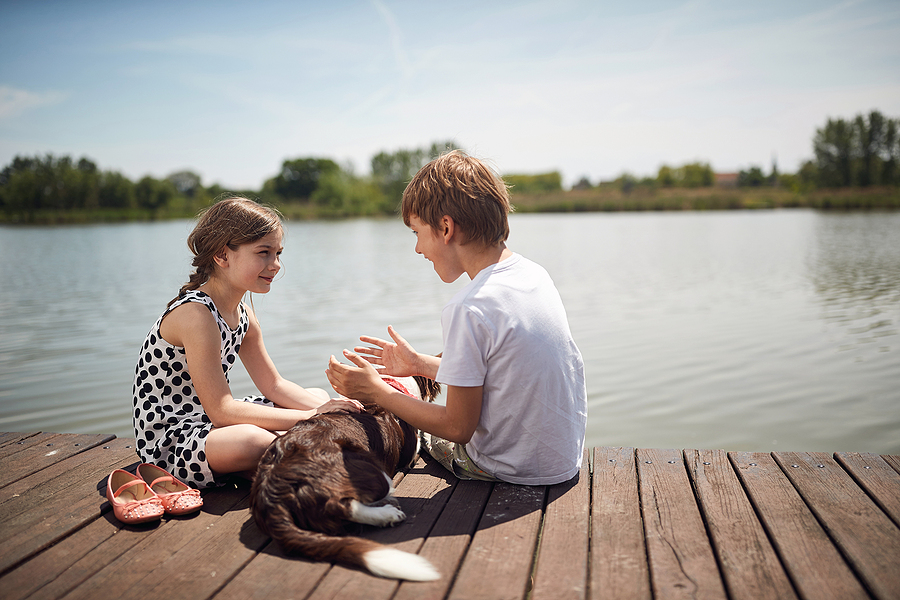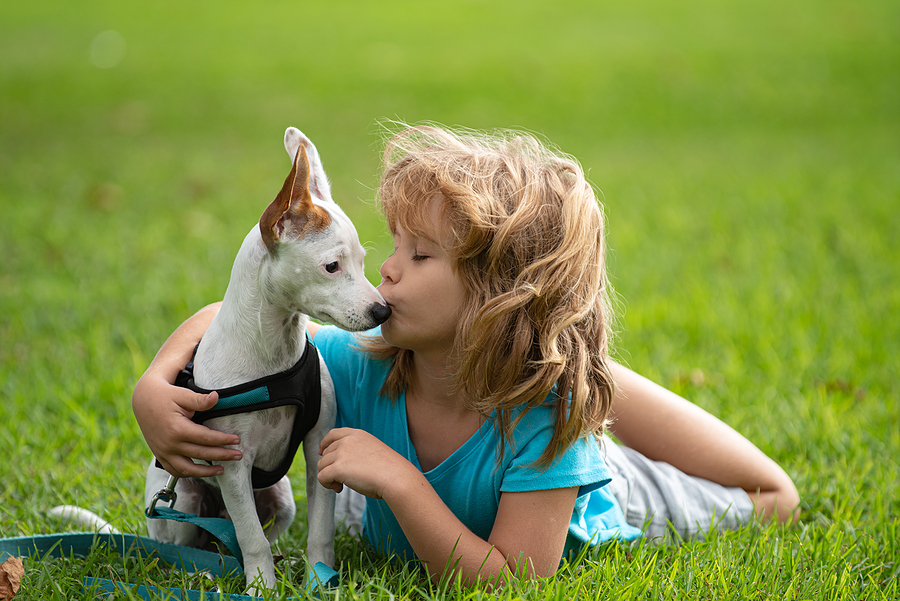“They SAID he was house trained!”
“She said he loved EVERYBODY!”
“He was FINE at my house! What did the new owners do to him?”
Every trainer and behaviorist who does consults hears these phrases on a regular basis. About the “house trained” spaniel who pees on the rug, the “everybody loving” Border collie who is terrified of strangers, the Boxer who loved his crate at the foster home, but bark/screamed whenever his new owners left the house. Understandably, new owners are disappointed when their new dog behaves vastly differently than described by the foster home. Fosters and shelters sometimes express frustration when told of behavior problems, and exclaim: “But he never did that here! Those new owners just don’t know what they are doing!”
But the fact is, Fido in one place is not necessarily predictive of Fido in another. Context and the environment plays as big a role in dog behavior as it does in yours. Probably bigger. But let’s start with us: Are you the same person during an intense meeting at work as you are when having drinks with friends, just a few hours later? [Full disclosure: I am not.]
Because environment plays such a large role in the behavior of all mammals, every dog behavior consultant I know hears about dogs who behave one way at the shelter or foster home, and very differently once adopted. Of course, there are plenty of dogs who are context proof–the goofy retriever-type who really does love everyone, doesn’t care where they live, and are fine being left alone. But there are just as many, who, for example, leave a foster home where they seem relaxed and friendly to all, who become fearful and sometimes aggressive when placed in what looks like a great home.
The two most common issues I’ve seen over the years related to changes in context are house training and dog’s who leave areas with multiple dogs and become the only one in the house.
House training is the simple one. (Note: Simple does not necessarily equal easy.) Just because a dog has learned not to potty in one place doesn’t mean that they generalize this knowledge to another home. I doubt our children are any different: Surely they need to learn not to use “outside voices” at the neighbor’s house as well as in their own. If I was sending a dog off and asked if they were house trained, I’d say “Not in your house, they’re not.” Actually, I wouldn’t wait to be asked, I just tell everyone to assume that no dog is “building trained” until they have lots and lots of experience to the contrary under their belt. Or their collar. You get my drift.
This is especially true of dogs who were not house trained at an early age. We got Skip when he was three, and as best I can tell, he lived in crates or a barn his entire life up to that point. I trust him 99.99% now at our house (100% if we’re sure he’s pooped right before we go to bed), and 100% at the vet clinic. But I still watch him every second if we’re staying at a motel. He hasn’t tried to lift a leg inside for two years, but . . .
Dogs house trained at an early age can usually be trained easily enough in a new house IF the new owners start off as if the dog was a puppy. (See Love Has No Age Limit for more on this.) The key is to understand that there’s no reason a dog’s brain would understand that “house training” means more than “only go outside where I live,” versus “never go inside anywhere.”
Far more complicated are the dogs who have been living with multiple dogs for years, but end up as a single dog in a new home. This can be tricky, because it is impossible to know how a dog is going to react to such a big change. Let me start by asking you to imagine that you’ve been living on Mars for a few years. The Martians are in charge, and seem benevolent and kind. However, they are Martians, not Earthlings. Luckily, you live with several other Earthlings, who happen to speak the same language as you. All is well, because, although you’re on an alien planet, you still spend time with individuals who speak the same language and understand how you think. But suddenly, with no time to prepare, you are taken to another place, where there are no Earthlings.
It’s a nice place, and the Martians there couldn’t be kinder. You get all the good food and attention you could ever desire. However. You’re alone. At least, in some ways it must feel like that, right? You’ve lost your friends, the ones who understand you, and who you understand without having to work at it. I’m not sure it even matters if those others were close friends; just being there must have made a big difference.
This is my hypothesis of why shelters, fosters, trainers and consultants see so many “But he NEVER . . . ” cases. (I think I’m going to coin a new diagnostic here: The “buthenever syndrome.”) All environmental changes are stressful, even ones in which the dog’s life is greatly enhanced. It’s still a change. But nothing like having your Earthling equivalents disappearing, and being on your own in Mars.
No wonder we see so many dogs with Separation Anxiety who were fine in the foster home when surrounded by six other dogs, but not when left completely alone. Or dogs who are fearful of visitors at their new place when they’d never met a stranger when they lived in a kennel. I don’t want to overstate this–many behavioral predispositions can be easily seen in all environments, although they might perhaps be exaggerated once sent to a new home. But it does explain much of why some dogs appear to behave so very differently from a shelter or foster setting and are placed as a single dog in a new home.
So. What to do? First, it’s critical to get our expectations in line–it’s very difficult to know how dogs are going to respond after going from a canine pack to a human-only family. I just talked to some good friends with a new dog, suggesting that they think of the first weeks as an adventure and an experiment. Who knows how Georgie will behave after the first days or weeks of shock start to fade away? If he’s shy, will he express that as defense and back away from visitors until he relaxes, or will he go after them–guns blazing–using offense to protect himself? Will Snowflake be okay for most of the day while you’re gone to work, if the house is a vast, empty cage after you leave? We just can’t know until some time has gone by; meanwhile, our job is to support the dog as best we can and learn who he or she is in this new environment.
Secondly, I’d like to suggest that dogs coming from a multiple-dog situation into a single dog home be given even more time to adjust. I guess this goes back to expectations–and understanding what a huge shock it must be to go from one environment to another. (See The Stress Factor in Dogs about the profound and lengthy effect that stress has on physiology and behavior.) I love that many shelters and fosters suggest keeping things extremely low-key for several days after dogs first arrive. For dogs from multiple-dog homes, I would love to see dogs left home alone to be surrounded by familiar scents, and left in cozy, safe-feeling spaces for literally just a few seconds initially. I personally take the same attitude with separation anxiety as I do with house training when a dog comes to a new home–Job One is to prevent trouble, starting on Day One. (See I’ll Be Home Soon about preventing Separation Anxiety.)
I have no research to support my hypothesis that dogs coming from multiple-dog households/facilities often find it a bit more challenging to adjust than other dogs do. It is just the strong impression I’ve gotten after 30+ years of working with behavioral problems. (Question: Wouldn’t this be a great topic for a thesis? Answer: Yeah!!!) I put this out to you then, curious what your experience has been. Have you thought about whether your dog came from a place with other dogs, or a single-family, all-human home? What’s been your experience if dogs come from a pack and become the only dog?
As I write, I realize I’m burying the lead here: Basically, I’m arguing that one of the biggest changes in a dog’s environment, from one place to another, is whether there are other dogs there or not. Jump in here–we’d love to hear from you.
MEANWHILE, back on the farm: Some more photographs from Arizona, including this shot Jim took of me and the view, while walking around Windy Point Vista on the drive to Mt. Lemmon north of Tucson.
Two more shots of birds from the Arizona Sonora Desert Museum. First, a Cactus Wren, flying free on the grounds. We saw Cactus Wrens every where, in Phoenix and Scottsdale. They are big for wrens, striking to look at, and, typical of all wrens, busy, busy, busy.
Jim took this photograph of a Hooded Oriole inside the large aviary, such a great shot!
Here’s the view from the backyard of the house rented by our dear friends. (Meg and Randy: We are SO grateful!) I grew up always understanding what “. . .the purple mountains majesty . . . ” meant.
I’ll leave you with something more current: Thank you King Arthur for your Swedish Almond Coffeecake mix. I get to pretend it’s home made cuz one has to add several things, has to knead it and let it rise twice, so, it’s home made, right? Who cares if it is or isn’t, because it’s DELICIOUS.
Here’s to delicious in your life too!
And jump in with your thoughts about dogs from “packs” to single homes; I’m so curious what your experience has been.







